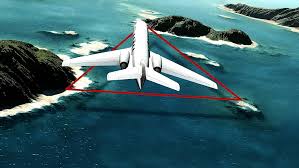When it comes to ships and their intricate designs, the hull stands out as one of the most vital structural components. The hull of a ship is essentially its main body—the portion that sits in the water, providing buoyancy, stability, and strength. Whether it’s a giant cargo vessel traversing oceans or a small fishing boat navigating coastal waters, the hull plays a central role in ensuring the vessel’s seaworthiness. In this blog, we will dive deep into the hull’s function, types, materials, design considerations, and why it is often called the “backbone” of a ship.
What is the Hull of a Ship?
The hull is the watertight body of a ship or boat. It includes the bottom (keel), sides (shell plating), and deck (in certain contexts), but excludes any superstructures like masts, funnels, or cabins built on top. The hull is the part that makes direct contact with the water, providing the buoyant force that keeps the ship afloat.
In simple terms, the hull is to a ship what a skeleton is to the human body—it gives it shape, strength, and form.
Functions of the Hull
-
Buoyancy: The primary function of a ship’s hull is to displace water and keep the vessel afloat. According to Archimedes’ Principle, the weight of the water displaced by the hull must equal the weight of the ship for it to float.
-
Stability: A well-designed hull provides balance and prevents capsizing, especially in rough seas. Hull stability is influenced by its shape and center of gravity.
-
Strength and Durability: The hull must withstand external pressures such as waves, wind, and collisions. It also supports the internal weight of the ship’s cargo, equipment, and passengers.
-
Hydrodynamics: The hull is shaped to minimize resistance (drag) in water, allowing for smoother movement and fuel efficiency.
Parts of the Hull
-
Keel: The lowest and central part of the hull, running along the ship’s length. It acts as the ship’s “spine.”
-
Frames and Ribs: These provide structural support, similar to the ribs of a human.
-
Shell Plating: These are the metal or wooden plates that cover the outer surface.
-
Bilge: The curved section of the hull where the bottom meets the sides.
-
Deck: Although technically above the hull, it works in conjunction with it to complete the vessel’s enclosure.
-
Bulkheads: Internal walls that divide the hull into watertight compartments for added safety.
Types of Hulls
There are different types of hulls, each suited for specific applications:
-
Displacement Hull: Found in cargo ships, cruise liners, and submarines, these hulls displace water equal to the vessel’s weight. They are stable and efficient but slower.
-
Planing Hull: Used in speedboats and patrol vessels, planing hulls rise and skim on top of the water at high speeds.
-
Semi-Displacement Hull: A hybrid between displacement and planing hulls, often used in fast ferries and yachts.
-
Catamaran Hull: Twin-hulled vessels that offer stability and speed. Common in passenger ferries and luxury yachts.
-
Trimaran Hull: Triple-hulled design offering even greater stability and surface area.
Materials Used in Hull Construction
Over the centuries, hull construction has evolved significantly:
-
Wood: Traditionally used for centuries due to its availability and buoyancy. Still used in small boats and historical ships.
-
Steel: The most common material in modern shipbuilding due to its strength, durability, and availability.
-
Aluminum: Lighter than steel and corrosion-resistant. Ideal for naval ships and high-speed vessels.
-
Fiberglass (GRP): Common in recreational and smaller boats. Lightweight, strong, and requires low maintenance.
-
Composite Materials: Used in advanced naval and racing vessels, offering high strength-to-weight ratios.
Hull Design and Hydrodynamics
Hydrodynamics—the study of fluids in motion—plays a significant role in hull design. A streamlined hull reduces resistance and allows the ship to move more efficiently through the water. Key considerations include:
-
Beam-to-Length Ratio: A wider hull offers more stability but reduces speed.
-
Draft: The depth of the hull submerged underwater. Deeper drafts provide better stability in large vessels.
-
Shape: V-shaped hulls cut through water better, while flat-bottomed hulls provide more stability in calm waters.
Modern ships undergo extensive computational modeling and testing in towing tanks to ensure optimal hull performance before actual construction begins.
Hull Maintenance and Safety
Given the constant exposure to harsh marine environments, hull maintenance is critical:
-
Anti-Fouling Coating: Prevents marine organisms from attaching to the hull.
-
Corrosion Protection: Sacrificial anodes and coatings protect metal hulls from saltwater corrosion.
-
Hull Inspections: Carried out during dry-docking to assess for damage, wear, or cracks.
-
Reinforcements: In ice-class vessels, hulls are reinforced to withstand ice impact.
The Role of Hulls in Ship Safety
The integrity of a hull is directly tied to the safety of a vessel. A breach in the hull can lead to water ingress and possible sinking. For this reason, most ships are designed with double hulls—an extra layer of protection, especially in oil tankers and large cargo vessels, to prevent environmental disasters.
Watertight compartments inside the hull can also isolate flooding and keep the ship afloat, a concept famously demonstrated (though unfortunately insufficient) during the sinking of the Titanic.
Conclusion
The hull of a ship is far more than just its outer shell—it is the core structural element that keeps the vessel afloat, ensures its strength, enhances its performance, and upholds safety at sea. Over time, advancements in design, materials, and hydrodynamics have allowed engineers to build increasingly larger, faster, and more efficient ships.
Whether made of wood or steel, flat-bottomed or V-shaped, single or multi-hulled, the hull remains a testament to mankind’s mastery over the seas. Without it, no ship would ever sail.



